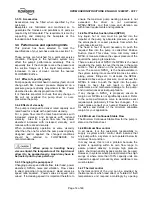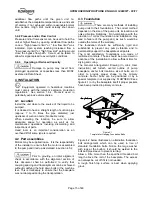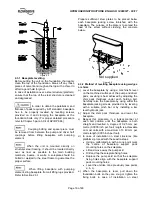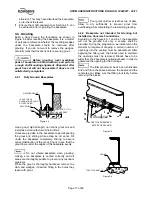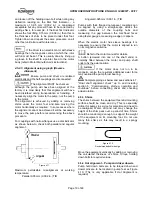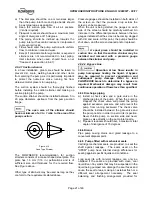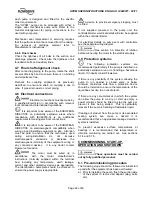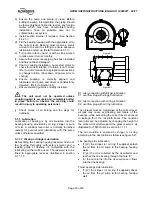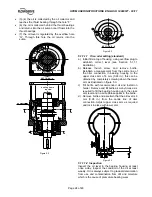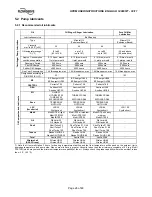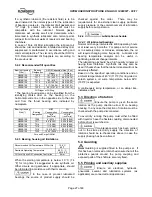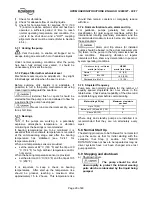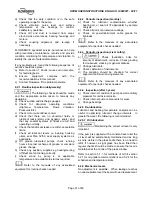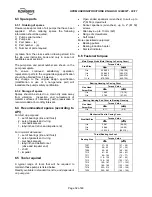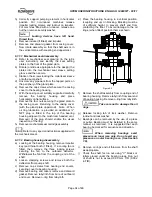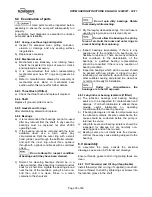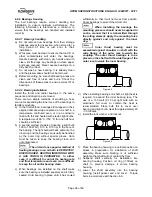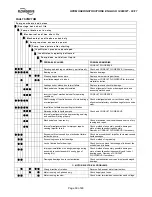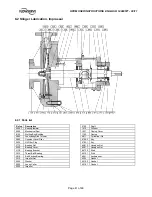
HPXM USER INSTRUCTIONS ENGLISH 14983571 - 03/11
Page 28 of 48
Ensure the inlet pipe and pump casing
are completely full of liquid before starting continuous
duty operation.
Before starting or while operating the
pump, the casing and suction line must be completely
filled with the liquid being pumped. The rotating parts
depend on this liquid for lubrication and the pump
may seize if operated without liquid.
5.6 Starting the pump
a) Close discharge valve if valve is not already
closed, and then crack open to assure minimal
flow. (Do not start unit with fully closed valve). On
first starts care must be taken not to cause a
system water hammer.
b) Prepare the driver for start up in accordance with
the driver manufacturer's instructions.
c) Warm up pump (if applicable).
d) Avoid severe thermal shocks to the pump as the
result of sudden liquid temperature changes. The
pump must be preheated prior to start up. Unless
otherwise specified the thermal temperature of
the casing must be within 55 °C (100 °F) of the
temperature of the liquid to be pumped at time of
start up. Due to the heavy metal sections, the
casing will lag the liquid temperature during such
changes, and severe temperature stresses and
subsequent misalignment of machined fits may
result. Preheating is accomplished by circulating
a small amount of hot fluid through the casing by
utilising vents, drains or bypass from discharge.
Preheat pump slowly at a rate not to exceed 55
°C per hour (100 °F per hour).
e) Prime pump and ensure suction valve is open.
Ensure flushing and/or cooling/
heating liquid supplies (if required) are turned ON
before starting the pump.
Before starting or while operating
the pump, the casing and suction line must be
completely filled with the liquid being pumped.
The rotating parts depend on this liquid for
lubrication and the pump may seize if operated
without liquid.
f) Ensure pump recirculating line (if required) is
open, clear and free of obstructions.
g) Check that pump is vented by observing leakage
from casing vent (when fitted) and seal piping
vent. Close vent (if fitted) when liquid is emitted.
h) Turn on cooling liquid and assure correct flow
exists (to cooler, insert gland etc.) as specified.
i) Double check pump rotation by starting unit
momentarily.
The direction of input shaft
rotation is counter clockwise when facing
pump shaft from coupling end. Ensure that
the pump coasts down to a gradual stop.
If pump stops abruptly when driver
is shut down, investigate for pump binding. Take
necessary remedial action before resuming
operation.
j) Start the driver and bring it up to speed quickly.
k) As soon as the pump is up to rated speed slowly
open discharge valve.
l) This will avoid abrupt changes in velocity and
prevent surging in the suction line.
m) Perform the operating checks
5.7 Operating checks
In the interest of operator safety the unit
must not be operated above the nameplate
conditions. Such operations could result in unit
failure causing injury to operating personnel.
Consult user instruction book for correct
operation and maintenance of the pump and its
supporting components.
Operation at low flows results in
pump heating the liquid. A bypass may be
required to prevent vaporisation and subsequent
pump damage. Refer to local FLOWSERVE
branch to determine if a bypass is required.
Mechanical damage may result from continuous
operation at flows less than the specified
minimum continuous stable flow.
Immediately after start up, and frequently during
running check the following:
a) Check suction and discharge pressure gauges.
b) Check pressure gauges on each side of suction
strainer.
c) Check for excessive leakage at seal areas.
d) Check for unusual noises.
e) Check oil level in bearing housing. (Refer to
Section 5).
Operation of the unit without correct
lubrication can result in overheating of the
bearings, bearing failures, pump seizures and
actual break-up of the equipment exposing
operating personnel to physical injury.

